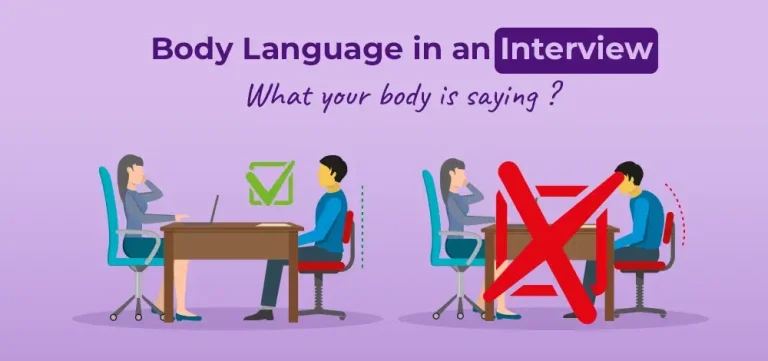Body Language Raised Eyebrows
Have you ever wondered what someone’s raised eyebrows could mean? Well, body language experts have cracked the code! In this article, we’ll dive into the fascinating world of body language and explore the meaning behind raised eyebrows.
Did you know that our eyebrows can reveal more about our thoughts and emotions than we realize? From surprise to skepticism, a simple raise of the eyebrows can speak volumes. Let’s uncover the secrets hidden in this subtle yet powerful form of nonverbal communication.
So, whether you want to better understand people’s intentions or improve your own body language skills, get ready to learn all about the intriguing world of raised eyebrows and the messages they convey. Let’s dive in!

Body Language: Decoding Raised Eyebrows
Body language is a powerful tool for communication, and one subtle gesture that can reveal a lot about a person’s thoughts and emotions is raised eyebrows. Whether it’s a quick flicker or a prolonged lift, raised eyebrows can convey surprise, skepticism, or even flirtation. In this article, we will delve into the intricate world of body language and explore the meaning and nuances behind raised eyebrows. Join us as we decode this fascinating nonverbal cue!
The Significance of Raised Eyebrows
When it comes to nonverbal communication, raised eyebrows are like a secret language that can speak volumes without uttering a single word. The eyebrow raise is a universal gesture that transcends cultural boundaries, making it a valuable tool for understanding others and expressing oneself. Let’s take a closer look at why raised eyebrows play such a significant role in human interaction.
The Power of Surprise
Raised eyebrows are commonly associated with surprise or astonishment. When we encounter something unexpected, our eyebrows instinctively shoot up, widening our eyes and creating an alert expression. This reaction dates back to our primal instincts, where a sudden change in our surroundings would require heightened attention. So the next time you raise your eyebrows in surprise, remember that you are channeling your innate survival instincts.
Surprise is just one aspect of raised eyebrows; let’s not forget their role in skepticism, flirtation, and more. Read on to discover the diverse meanings behind this intriguing nonverbal cue!
The Role of Skepticism
Raised eyebrows can also be an indication of skepticism or doubt. When we raise our eyebrows in this context, it suggests that we are questioning the validity of something or someone. Skepticism is a defense mechanism that aids in critical thinking and discernment. It allows us to analyze and evaluate information before forming judgments or making decisions. So the next time you find yourself skeptically raising your eyebrows, trust your instincts and give a moment of careful consideration.
The Language of Flirtation
Another interesting aspect of raised eyebrows is their role in flirtation. When someone raises their eyebrows while making eye contact, it can be interpreted as a gesture of interest or attraction. The subtle movement draws attention to the eyes, making them appear larger and more expressive. This flirtatious use of raised eyebrows is thought to be a subconscious attempt to signal attraction and create a sense of playfulness. So, if you notice someone raising their eyebrows in your presence, it might just be their way of saying, “I’m interested.”
The Art of Reading Raised Eyebrows
Now that we understand the significance of raised eyebrows, let’s delve into the art of interpreting this fascinating body language. Reading raised eyebrows can give us valuable insights into someone’s thoughts, emotions, and intentions. In this section, we will explore various scenarios and the meaning behind the eyebrow raise in each context.
Raised Eyebrows vs. Lowered Eyebrows
One way to understand the meaning of raised eyebrows is by comparing them to lowered eyebrows. While raised eyebrows convey surprise, interest, or skepticism, lowered eyebrows often indicate aggression, anger, or disapproval. Understanding this contrast can help us accurately interpret the subtle nuances of someone’s facial expressions and emotions.
Context Matters
When interpreting raised eyebrows, it’s essential to consider the context in which they occur. Raised eyebrows accompanied by a smile and a relaxed posture may indicate excitement or delight. On the other hand, raised eyebrows with a furrowed forehead and tight lips may signal concern or worry. By observing the overall body language and facial expressions, we can paint a more complete picture of what someone is truly feeling.
Timing and Duration
The timing and duration of raised eyebrows can also reveal valuable insights. A quick and subtle raise may indicate surprise or curiosity, while a prolonged lift could suggest disbelief or disbelief. Paying attention to these subtle variations can help us better understand the emotions and thoughts behind the nonverbal cues.
Tips for Enhancing Body Language Awareness
Now that we have explored the world of raised eyebrows in body language, let’s discuss some tips for enhancing our overall body language awareness. By becoming more mindful of our nonverbal cues and those of others, we can improve our communication skills and develop a deeper understanding of human interaction.
Observe and Practice
Start by observing the body language of those around you. Notice how people use their eyebrows, facial expressions, and other nonverbal cues to convey messages. Practice mirroring these gestures in a subtle and natural way to enhance your own communication skills. With time and practice, you will become more attuned to the subtle nuances of body language.
Pay Attention to Your Own Body Language
Self-awareness is crucial when it comes to body language. Pay attention to the messages you are conveying through your own nonverbal cues, including raised eyebrows. Practice maintaining open and relaxed body language to create a more positive and approachable impression on others.
Consider Cultural Differences
It’s essential to remember that body language can vary across different cultures. What may be seen as a friendly gesture in one culture might be interpreted differently in another. Take time to familiarize yourself with the cultural norms and practices of the people you interact with to avoid misunderstandings or misinterpretations.
In Conclusion
Raised eyebrows are a fascinating element of body language that can convey a wide range of meanings and emotions. From surprise and skepticism to flirtation and curiosity, this subtle gesture offers valuable insights into human interaction. By becoming more attuned to the language of raised eyebrows and practicing mindfulness of our own nonverbal cues, we can enhance our communication skills and deepen our understanding of those around us. So, the next time you notice someone raising their eyebrows, remember that there is more to their message than meets the eye!
Key Takeaways: Body Language and Raised Eyebrows
- Raised eyebrows can indicate surprise or disbelief.
- Lowered eyebrows can convey anger or frustration.
- The intensity of raising or lowering eyebrows can show the level of emotion.
- One raised eyebrow may suggest skepticism or curiosity.
- Eye contact combined with raised eyebrows can signify interest or agreement.
Frequently Asked Questions
When it comes to understanding body language, raised eyebrows can convey various meanings. Here are some commonly asked questions about body language and the significance of raised eyebrows:
1. Why do people raise their eyebrows when they are surprised or shocked?
When people are surprised or shocked, they often raise their eyebrows instinctively. This facial expression helps to widen the eyes, allowing them to take in more information. It’s a natural response that helps individuals gather more visual data, as if to say, “I need to see and understand more.” Raising the eyebrows also creates a distinct facial expression that others can quickly recognize, leading to better communication and connection.
Remember, body language is a powerful form of nonverbal communication, and raising eyebrows in surprise or shock is one way humans convey their emotions without using words.
2. Can raised eyebrows also indicate skepticism or disbelief?
Indeed, raised eyebrows can be a body language cue for skepticism or disbelief. When someone raises their eyebrows while listening to another person’s statements, it often signifies doubt or questioning. The raised eyebrows can indicate that the listener is not entirely convinced or is seeking further evidence or clarification. This gesture can also be accompanied by other skeptical cues, such as a slight head tilt or a pursed mouth.
However, it’s important to note that raised eyebrows can have different meanings depending on the context and accompanying facial expressions. They should always be interpreted in conjunction with other body language cues to accurately understand a person’s emotions or intentions.
3. Are raised eyebrows a sign of flirtation or attraction?
Yes, raised eyebrows can be a sign of flirtation or attraction. When someone finds another person attractive or interesting, they may subtly raise their eyebrows as a way of showing intrigue and attentiveness. This gesture can also be accompanied by prolonged eye contact and a slight smile. By raising their eyebrows, individuals create an open and inviting facial expression that signals their interest in the other person.
However, it’s essential to consider other factors, such as the overall body language, to accurately gauge someone’s level of interest or attraction. Raised eyebrows alone may not be a definitive indicator of flirtation, as people have different natural facial expressions and gestures.
4. Can raised eyebrows indicate confusion or lack of understanding?
Yes, raised eyebrows can be a nonverbal signal of confusion or a lack of understanding. When someone is trying to comprehend something that is complex or unfamiliar to them, they may raise their eyebrows as a visual expression of their mental processing. This gesture can be an indicator that the person is mentally grappling with the information or is in need of further clarification.
Keep in mind that raised eyebrows alone are not a foolproof indicator of someone’s confusion; other facial expressions and body language cues should be taken into account for a more accurate interpretation.
5. Are raised eyebrows always intentional, or can they happen unconsciously?
Raised eyebrows can occur both intentionally and unconsciously. Sometimes people raise their eyebrows as a deliberate gesture to communicate a specific message or emotion. For example, someone may raise their eyebrows consciously to express surprise or skepticism. However, raised eyebrows can also happen involuntarily as an automatic response to certain stimuli.
Unconscious eyebrow raising can occur in response to various emotions or situations, such as surprise, shock, or confusion. These spontaneous gestures are more difficult to control and can give observers valuable insights into a person’s genuine reactions. Keep in mind that not all raised eyebrows are intentional, and considering the overall context is crucial for accurate interpretation.
Why Do We Raise Our Eyebrows? The Science of Eyebrow Flashing. The Body Language Library
Summary:
Body language, like raised eyebrows, can give us clues about how people are feeling. It’s important to pay attention to these nonverbal signals because they can help us understand the true meaning behind someone’s words. Raised eyebrows often indicate surprise, confusion, or interest, so it’s essential to be aware of this gesture during conversations.
When someone raises their eyebrows, it’s a sign that something unexpected or intriguing has caught their attention. By recognizing this body language, we can better understand the emotions and thoughts of others, allowing for more effective communication and empathy. So, next time you notice someone’s eyebrows go up, take a moment to consider what it might mean and how it can improve your connection with them.

